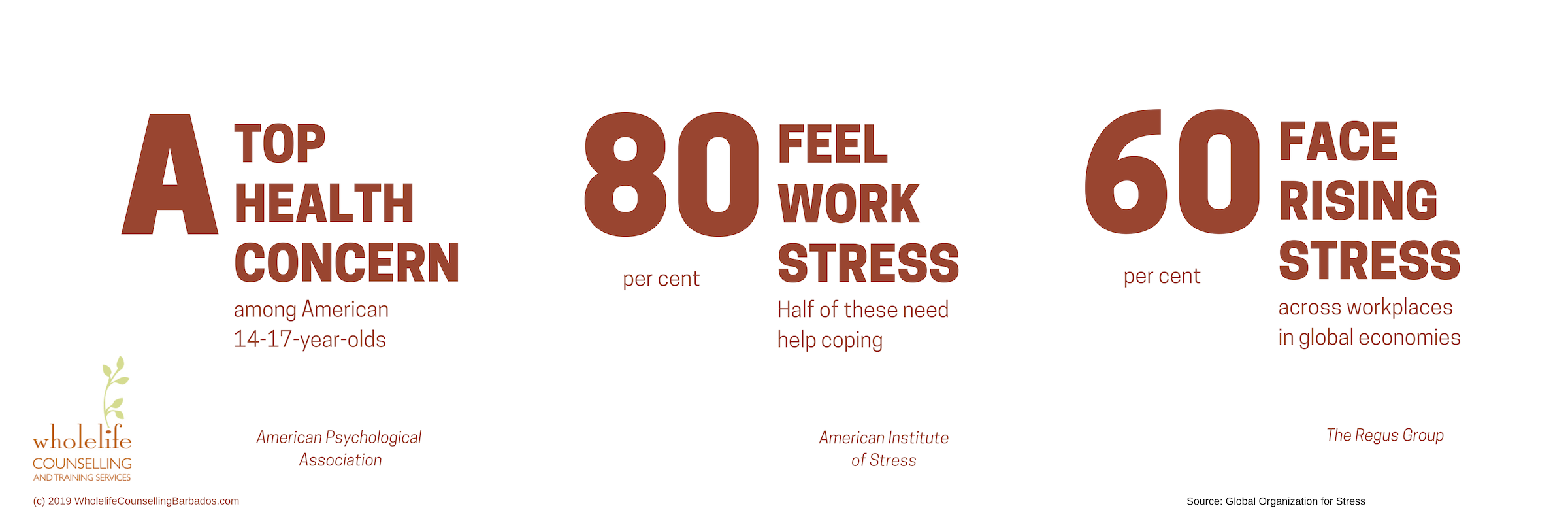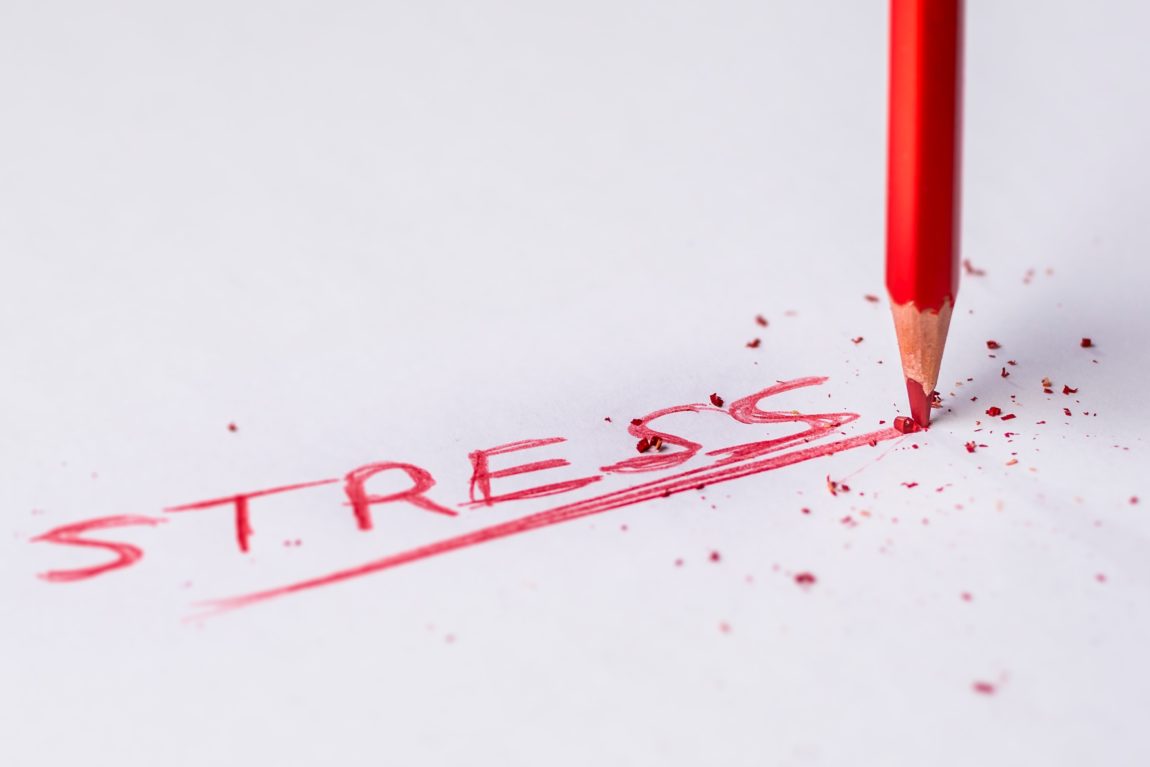It’s not hard to see why they say stress is a killer. With these numbers, is there any doubt why health professionals are begging us to reduce our stress levels? This article introduces signs of stress you ought to know.

- Teenagers worried about stress and likely to suffer harmful long-term effects if that stress isn’t managed now.
- Eighty per cent of workers feeling stress on the job, half of them needing help to cope, and almost half (42%) suggesting help for colleagues.
- In major economies, more than half of workers feeling increased levels of workplace stress.
Global Organization for Stress compiled facts and statistics on stress from The American Psychological Association and The American Institute of Stress to The Regus Group and others.
We live in comparatively more stressful times than our elders experienced. This is true in families, in the workplace, in schools, even in our social interactions. The reality is that stress levels are increasing with time despite technological and scientific advances. Ironically, these advances were intended to ease life’s pressures and improve quality of life.
Since it is impossible to rid ourselves of good stress and negative stress, this post provides an initial understanding of stress. It also examines its impact, and how people respond – especially to negative stress.
Eustress: When stress is good
The lack of a single definition of stress hints at the complexity of its nature. First, the term is often characterised negatively. However, there is good stress, also called eustress.
Hans Selye, the Hungarian endocrinologist, was first to use the term eustress. He defined it as positive stress that is healthful and improves a person’s wellbeing, resulting in satisfaction. Eustress produces the impetus or drive and energy to help people achieve a goal. Like finishing an exam, meeting a work deadline such as completing a management report, or walking down the aisle! Eustress may also be experienced after winning the lottery, competing in a contest, riding a roller coaster, exercising, or watching an action thriller movie. These as all positive experiences of stress that can form part of a healthy lifestyle.
Distress: When signs of stress turns bad
The problem occurs when what should be a normal stress response escalates and potentially stays in a heightened state. An effective definition of distress (negative stress) depends on whether it is from a medical or psychological point of view. A medical or biological perspective defines negative stress as a physical, mental, or emotional factor that causes bodily or mental tension. On the other hand, the American Psychological Association considers distress to be “any uncomfortable emotional experience accompanied by predictable biochemical, physiological and behavioural changes.”
The most commonly used definition of negative stress is the physical, emotional, behavioural and perceptual/cognitive ways of handling pressure or a crisis. Notice that it identifies four elements of stress responses. Following is a synopsis of the details of the characteristic responses or signs of stress of each.
Recognising physical responses to stress
The “fight-or-flight” response is the physical response to stressful events. It explains the body’s immediate response to a stressful situation. Being attacked by a dangerous animal or being in a life or death situation – or having to meet a bullying boss are ready examples! The ongoing, physical response to a stressor starts the moment someone recognises the presence of that stressor. Stressors send signals to the brain, and to specific sympathetic and hormonal triggers. These then indicate the body’s need to eliminate, reduce and/or cope with the stress.
The body produces the hormone adrenalin, which causes internal changes such as a slowdown in digestion while simultaneously increasing sweating, pulse and blood pressure. Have you ever been walking to your car in a dark place, and suddenly heard footsteps behind you? Your mouth gets dry, your heart pounds faster and your pace picks up, right?
Other physical responses or signs of stress may include muscle tension, aches and pains, excessive sweating, weakness, hunger, diarrhoea or constipation, nausea or dizziness. Additional signs may be chest pain, rapid heartbeat, loss of sex drive, and frequent colds.
Then they’re emotional responses
Emotional responses to stress include thoughts and feelings, most often negative. Other emotional responses to stress may include:
- anxiety, moodiness, irritability or short temper and agitation
- the inability to relax
- feeling overwhelmed
- a sense of loneliness and isolation
- depression and general unhappiness
- helplessness
- mistrust
- apathy/boredom, and
- feeling worthless
Ever experienced these behavioural responses to stress?
Behavioural responses may include eating more, or less, sleeping too much, or too little, isolating yourself from others, procrastinating or neglecting responsibilities, substance abuse to relax, accident proneness, prolonged silences, diminished sex drive, and emotional outbursts. And this is not an exhaustive list of the signs of stress.
Add perceptual/cognitive responses
Finally, let us consider perceptual/cognitive responses to stress. These include memory problems, inability to concentrate, poor judgment and problem solving, and seeing only the negative. Other signs may be anxious or racing thoughts, constant worrying, tendency to blame others, difficulty comprehending, and increased or decreased awareness of one’s surroundings.
For more clarity on this fourth element in the definition, the perceptual/cognitive, Epictetus noted that “[p]eople are disturbed, not by a thing, but by their perception of a thing.” Stress Management for Educators author, Bettie B. Youngs, reinforced that statement, noting: “Each of us interprets and assigns different meaning (power) to stressful situations/stressors. How violently or calmly you respond to the stressful situation itself is under your control.” So, a task or event becomes insurmountable and will produce a high level of negative stress because of your perception of that task or event.
Other ways people respond to long-term stress
Another Hans Selye model, General Adaptation Syndrome, explains people’s response to long-term stressors. In it, Selye pinpointed that when pushed to extremes, people react in three stages: The Alarm Phase, the Resistance Phase, and the Exhaustion/Burnout Phase.
Let’s say, for example, that someone is having problems at work or at home. Consider the signs of stress in those or other troubling situations.
The Alarm Phase is the person’s first reaction to a stressor and includes elements of the “fight-or-flight” response. The Resistance Phase covers her/his long-term responses to coping with the stressful event. This phase lasts for as long as [s]he can support this heightened resistance. Once resistance is exhausted, the person enters the Exhaustion Phase. Resistance then declines substantially. The body’s loses its ability to resist because its adaptation energy supply is gone.Terms like overload, burnout, adrenal fatigue, maladaptation or dysfunction describe this stage. Here is where stress levels go up and stay up!
Chronic negative stress can damage nerve cells in tissues and organs
This stage of the General Adaptation Syndrome is the most hazardous to your health. Chronic negative stress can damage nerve cells in tissues and organs. There is evidence that this has a destructive impact on the hippocampus. The hippocampus is a part of the brain. It is found in the inner folds of the bottom middle section of the brain between the ears, known as the temporal lobe.
The hippocampus is associated with the functions of feeling, reacting and some memory. Part of the limbic system, the hippocampus also helps control such bodily functions as the endocrine system and what is commonly known as the “fight or flight” reaction. Negative stress can equally adversely affect the function of the autonomic nervous system that contributes to high blood pressure, heart disease and other stress-related illness.
Next …
So, we’ve dealt with signs of stress. Given its wide-ranging effects, it’s impossible to broach the subject adequately here. In a follow-up article, we will delve deeper into stress and its management.
If you can’t wait till we post the next part to this post to talk to us, or maybe the information above matches what you’re experiencing, we’re happy to help.

